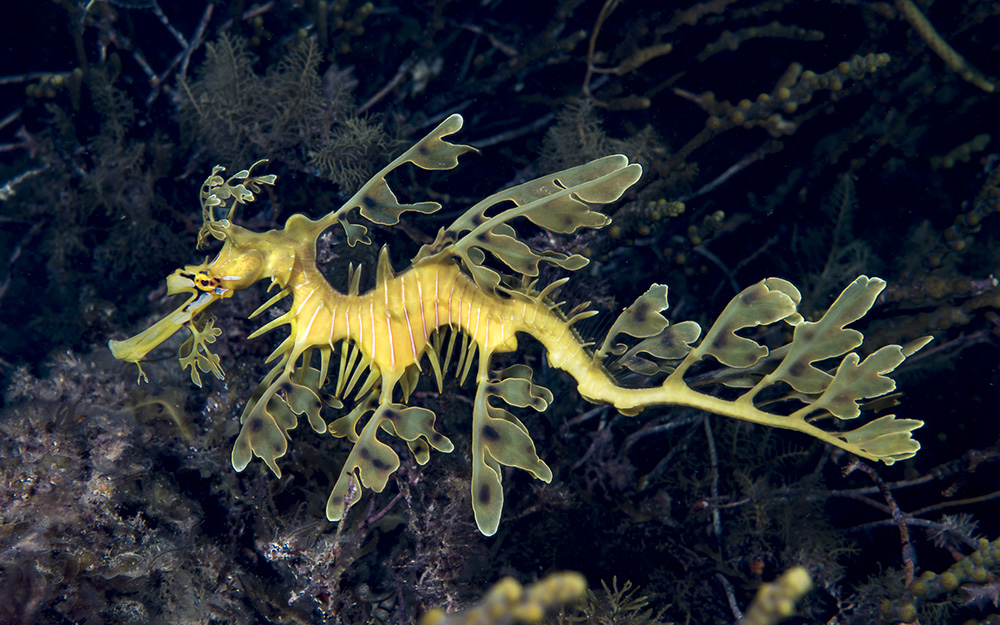Leafy seadragon
(Phycodurus eques)

General data
The leafy seadragon is the only member of the genus Phycodurus and is a marine fish in the family Syngnathidae, which includes seadragons, pipefish, and seahorses.
It is found along the southern and western coasts of Australia. The name is derived from the appearance, with long leaf-like protrusions coming from all over the body. These protrusions are not used for propulsion; they serve only as camouflage. The leafy seadragon propels itself by means of a pectoral fin on the ridge of its neck and a dorsal fin on its back closer to the tail end. These small fins are almost completely transparent and difficult to see as they undulate minutely to move the creature sedately through the water, completing the illusion of floating seaweed.
Popularly known as leafies, it is the marine emblem of the state of South Australia and a focus for local marine conservation.
While not large, they are slightly larger than most seahorses, growing to about 20–24 cm (8–9.5 in). They feed on plankton and small crustaceans.
The lobes of skin that grow on the leafy seadragon provide camouflage, giving it the appearance of seaweed. It is able to maintain the illusion when swimming, appearing to move through the water like a piece of floating seaweed. It can also change colour to blend in, but this ability depends on the seadragons diet, age, location, and stress level.
The leafy seadragon is related to the pipefish and belongs to the family Syngnathidae, along with the seahorse. It differs from the seahorse in appearance, form of locomotion, and its inability to coil or grasp things with its tail. A related species is the weedy seadragon, which is multicoloured and grows weed-like fins, but is smaller than the leafy seadragon. Another unique feature is the small, circular gill openings covering tufted gills, very unlike the crescent-shaped gill openings and ridged gills of most fish species.
Habitat and distribution
The leafy seadragon is found only in southern Australian waters, from Wilson’s Promontory in Victoria at the eastern end of its range, westward to Jurien Bay, 220 km (140 mi) north of Perth in Western Australia. Individuals were once thought to have very restricted ranges; but further research has discovered that seadragons actually travel several hundred metres from their habitual locations, returning to the same spot using a strong sense of direction. They are mostly found over sand patches in waters up to 50 m (160 ft) deep, around kelp-covered rocks and clumps of sea grass. They are commonly sighted by scuba divers near Adelaide in South Australia, especially at Rapid Bay, Edithburgh, and Victor Harbor.











